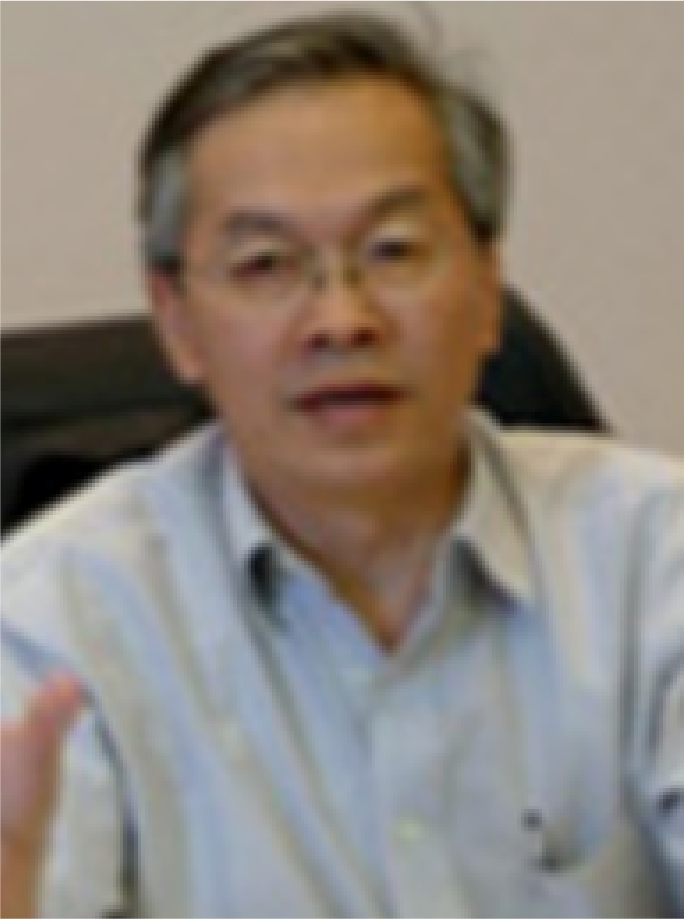
Treasury of Times & Origins

The Space Odyssey 2001 of AOGS
Wing-Huen Ip
Institute of Astronomy, National Central University
A recount of the initial planning of AOGS and the beginning of its cooperative relationship with Meeting Matters.
First time I heard the idea of establishing an Asia-based geosciences society from Ian must have been sometime in 2001. Knowing him, I would venture to say that he could have already been thinking about it for a long time. He basically said that he had been discussing this possibility with Prof. Yohsuke Kamide who was Director of STELAB of Nagoya University at that time. I must have replied that it was a good idea and wished them luck knowing that it won't be easy.
After a few more rounds of communications and taking advantage of Ian’s visit to Taiwan in May, 2002, I organized an informal meeting on May 17 to provide a forum to explore this possibility for the first time. The main participants were Ian, Kamide-san, Dong-Kyou Lee from Seoul National University, Chan Eng-Soon from National University of Singapore, Su Jilan from the Second Institute of Oceanography, State Oceanic Administration of China, YQ Chan from Hong Kong Polytechnic University, JC Chen from National Taiwan Univeristy, Kenji Satake at Geological Society of Japan, and myself. While everyone agreed that this was a worthwhile project of potential importance to the Earth science community in the Asia and Pacific region, it was not clear how to make it happen. In any event, an interim organization committee of the Asia-Oceania Geosciences Society was formed at the meeting with me as the Interim Chairman. I therefore had the unenviable task of getting things started with zero budget and no manpower support.
I need to mention that the very successful renewal of the European Geophysical Society (merged with the European Union of Geosciences into European Geosciences Union in 2002) in the 1990s was strongly supported by a number of European institutions including the Max-Planck Institute for Aeronomy when Professor Ian Axford was Director there. No such advantage existed for AOGS and everything had to be built from ground zero. In any event, Ian suggested that - following the model of EGS - the meeting location should be some place with easy access by international airlines and has to be in the middle of the Asia-Pacific. Hong Kong and Singapore were therefore to be considered.
It was at the NCU meeting that Professor Chan Eng Soon mentioned the potential interest of some organizations in Singapore in supporting the meeting activity.. Among the people whom I met with his help when I travelled to Singapore to explore the possible arrangement of the first AOGS annual meeting in 2004, Khoo Cheng Hoon, Manager of Meeting Matters, was most intrigued by the prospect of organizing a large scientific meeting each year in Singapore in cooperation with AOGS and the Singaporean Tourist Bureau . She told me that, even though AOGS does not have a dime, Meeting Matters is prepared to provide money and human resource to organize this first meeting. The deal was that - if I remember correctly - the sharing would be 40% for AOGS and 60% for MeetMatt, either profit of loss from the meeting. But after Khoo Cheng Hoon showed me around her organization and, especially, the meeting facility at SUNTEC, I grew more confident and had the courage to tell her that, sunshine or rain, in order to keep its identity as an academic society, AOGS should be the major partner to this venture with a 60:40 sharing scheme while MeetMatt would take care of the Secretariat Office. This was the origin of all things to come. What happened since then is another story for another time.
It is most appropriate that the 10th AOGS annual meeting in 2013 is being held in Brisbane thus making the immense territory of Oceania an integral part of our Society. The addition of the new Biogeoscience section is also a good omen. In the AOGS logo, there is a fern that is a symbol of new life according to the Maori people of New Zealand. The Maori also tell us that the most important thing in the world is people. Yes, our Society has been established not just to promote international cooperation in geosciences and dialogs with natural history, but also to facilitate dialogs from the point of view of human history. One time when I was still working in Germany, I asked Ian why he maintained friendship and extended so much assistance to some foreign scientists. He replied that this was simply because we owed them a lot in the past and this is only a small way to redeem ourselves. I think, with this spirit, AOGS scientists will be able to bring ever-lasting peaceful cooperation to our home lands from Kashmir to Wellington, and from Colombo to Sapporo.
